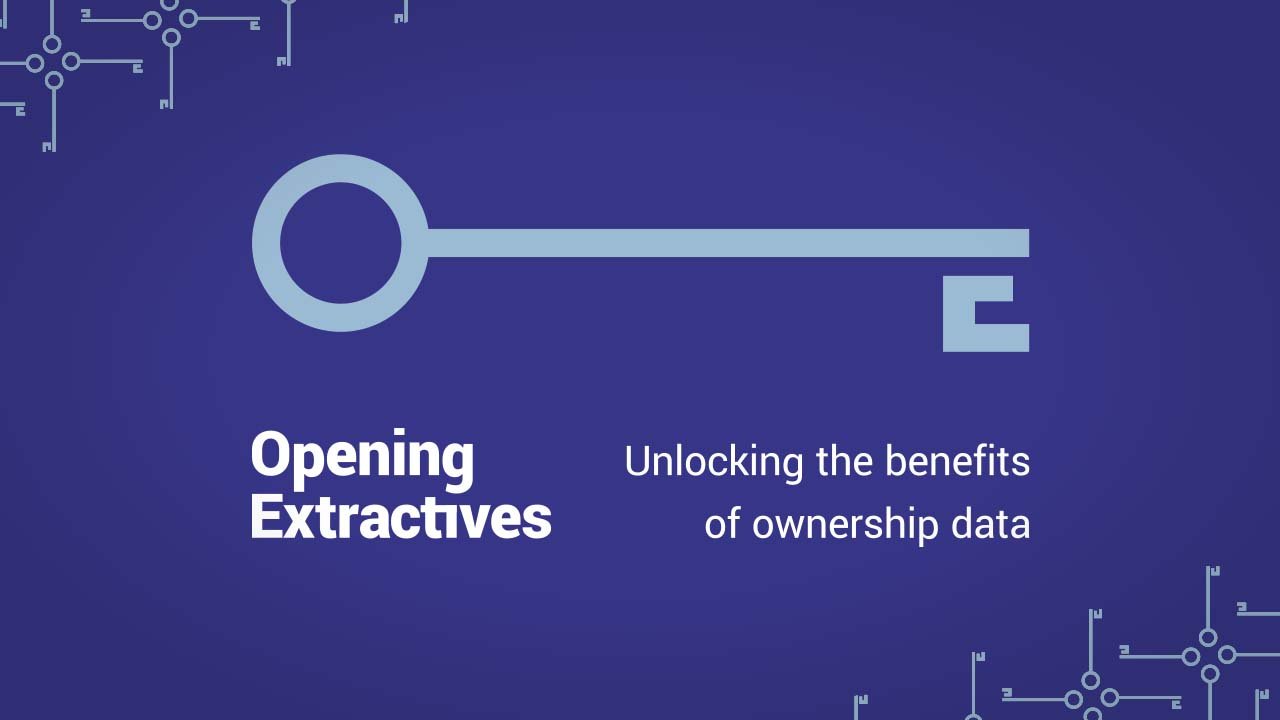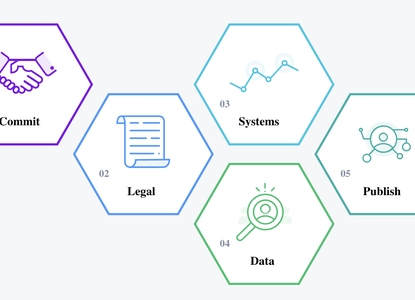Implementation checklist: Creating a public beneficial ownership register

38 steps to data publication
Introduction
Creating a centralised beneficial ownership register involves a series of tasks that vary according to the specific policy aims, legal framework and existing digital infrastructure within a given implementation context. There is consequently no strict work plan that will lead to effective implementation in all countries, though a number of tasks are common to most jurisdictions where a register is created.
To assist with implementation planning, Open Ownership (OO) has developed the following task list which illustrates the typical reforms that governments will need to consider. The list is not exhaustive and the tasks are not necessarily arranged sequentially below; indeed, optimal implementation most probably will involve multiple areas of reform being advanced in parallel. For more detail on how to create beneficial ownership registers, please see the OO implementation guide, principles for effective disclosure and data standard.
Tasks
Commitment
1. Make a specific, public commitment to create a centralised BO register – ideally featuring a pledge to publish in open data format.
2. Identify which government agencies / ministries will be involved in the implementation process, and which will have ultimate responsibility for overseeing the reforms.
3. Establish mechanisms for ensuring regular communication and effective cooperation between the various agencies involved.
4. Decide how to sequence the introduction of new requirements to disclose beneficial ownership information in a central register (e.g. beginning with a single-sector pilot programme, or by going directly to an economy-wide disclosure system).
5. Draw up provisional plans and/or a roadmap to implementation, including assigning specific tasks and deadlines to each agency involved.
6. Conduct a risk assessment of corporate vehicles to help decide which entities should be subject to disclosure, to determine thresholds and help shape enforcement mechanisms.
7. Design consultation procedures for each stage of the reforms to ensure the various views and needs of government officials, law enforcement, citizens, CSOs and businesses are represented and incorporated into implementation plans.
8. Assess how different government officials will eventually use BO information (e.g. by checking for red flags linked to companies bidding for procurement contracts) and use this to inform reform plans.
Legal
1. Create a definition in law of what constitutes a beneficial owner and/or unify any existing definitions into a single piece of primary legislation (secondary legislation and guidance notes can provide further detail on data collection and and data publication).
2. Decide which entities will be required to make BO declarations, ideally in line with the OO Principle of comprehensive coverage of persons and entity types.
3. Agree which entities and people will be disclosed in those declarations (including consideration of potential different treatment for state-owned enterprises, listed companies, trusts, nominees, intermediate companies etc.).
4. Decide which details about the above people and entities will be collected in declaration forms, including on the nature of their ownership or control.
5. Confirm when companies will be required to submit: a) their first BO declaration; and b) inform authorities of subsequent changes to their ownership structure (e.g. within 14 days).
6. Establish sanctions in law for individuals and firms that fail to meet reporting obligations and provide legal authority to a local agency to enforce them.
7. Review local data protection legislation and international best practices on data protection; decide which subset of the fields of collected BO information will be made available to the public and which will be accessible only to competent authorities.
8. Design a protection regime so that individuals at potential risk of harm from publication of their data (e.g. victims of stalking) can apply for their information to be withheld from general publication.
Systems
1. Decide whether BO information will be incorporated into an existing companies’ register, or fed into a newly designed relational database that will be linked to other datasets via reliable identifiers.
2. Draw up the business processes for how companies or individuals will submit their information to authorities for example, via an online or paper form, or via an authorised notary.
3. Draft declaration forms and use the OO disclosure workbook to assess internal understanding of legislative requirements.
4. Design and implement awareness campaigns for businesses to inform them of their forthcoming obligations to submit BO information.
5. Conduct training for companies and individuals on their reporting obligations under the legislation and on how to fill out the declaration forms accurately.
6. Test the draft declaration form with a representative sample of companies and collate their feedback.
7. Consult with the state agencies that are potential users of BO information during a review of feedback on the forms; produce and disseminate a second iteration of the document.
8. Develop guidance for regulated entities, registrars and any third parties involved in submitting or checking BO information, on how to calculate percentage beneficial ownership within complex company structures.
9. Create a reporting mechanism on the public register to allow private sector actors, civil society organisations and the public to report inaccuracies identified in published BO data.
10. Adopt a risk-based approach to investigating discrepancies reported (for example, by prioritising firms in sectors associated with high corruption risks or those that have been the subject of multiple user error reports).
Data
1. Consult the Beneficial Ownership Data Standard and design a schema to structure BO data.
2. Consider potential inputs for an eventual data verification system by conducting an audit of the data or data schemas available in other relevant existing state registers.
3. Use this information to draw up and agree plans for a BO data verification system, including checks on data at both the point of submission and after publication.
4. Consider how verification mechanisms will be effectively integrated with the sanctions and enforcement function to identify submitted BO information that is incorrect, fraudulent, or incomplete.
5. Advance legal reforms that will permit data sharing between the government agencies and registries to allow for the application of the data verification system.
Publish, use, and improve
1. Gather and compile, in a central register, an initial round of BO data disclosures (ideally in a public register, containing structured data available in a machine-readable format free of charge).
2. Issue warnings, fines or other sanctions (such as dissolution of company) to those firms and individuals that have failed to comply with their obligations to disclose beneficial ownership information.
3. Conduct a review and analysis of the data gathered, seeking to identify particular issues within the disclosure system that have led to data quality issues and/or loopholes.
4. Address any issues identified in the above reviews, including via the approval of changes to primary or secondary legislation regarding the requirements to disclose this information.
5. If implementation started with a pilot programme of disclosures in a given industry sector, amend or pass new legislation expanding disclosure requirements to apply to other sectors.
6. If the first iteration of the register was made available only to competent authorities, consider passing new legislation to make the data publicly accessible.
7. Conduct periodic meta-analyses of the published data, user consultations and information from law enforcement to identify shortcomings in the disclosure regime or systems that could be addressed via changes to data collection systems, legislation or training.
Related articles and publications
Publication type
News article
Topics
Opening Extractives
Sections
Implementation
Open Ownership Principles
Access

